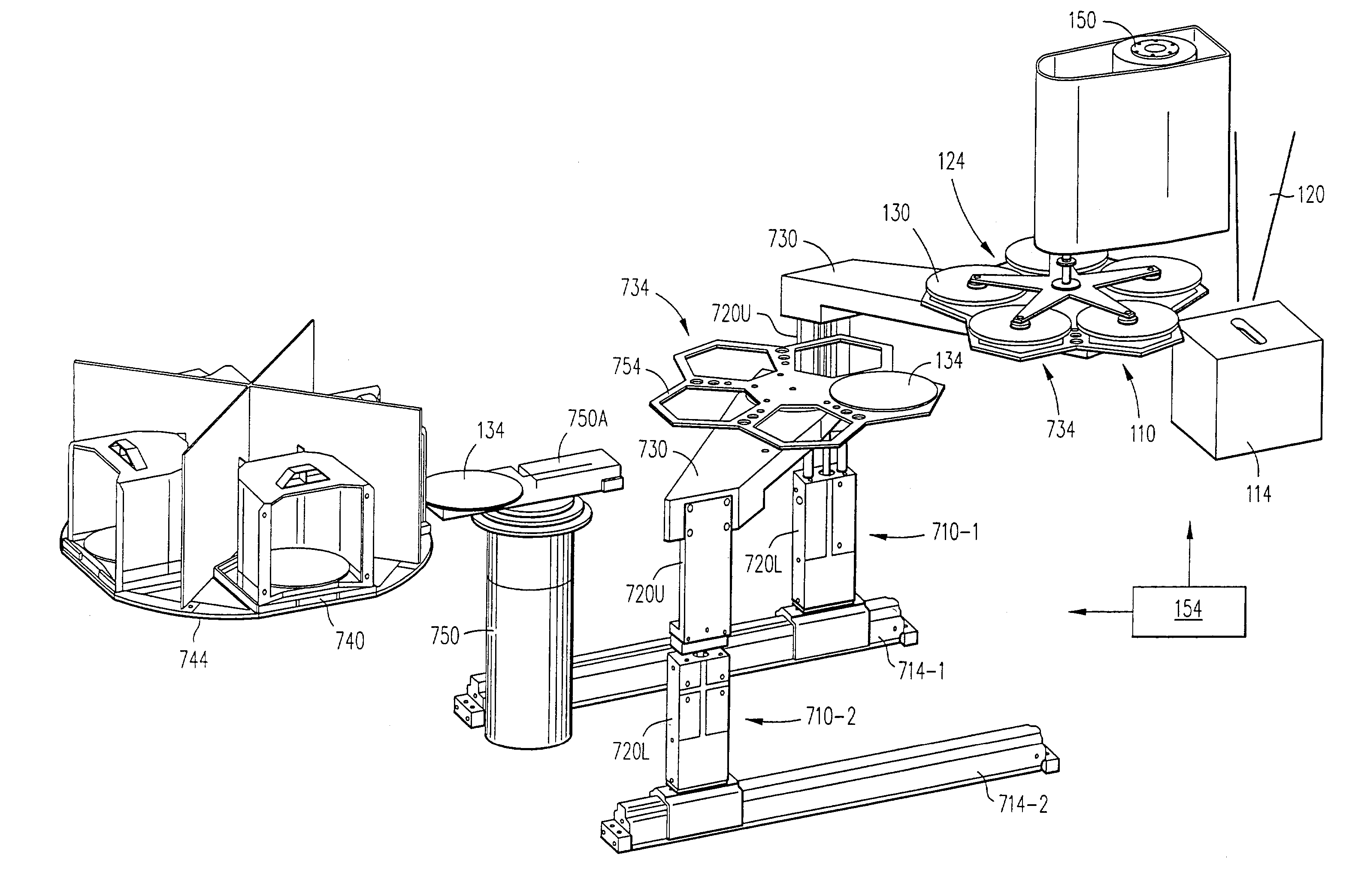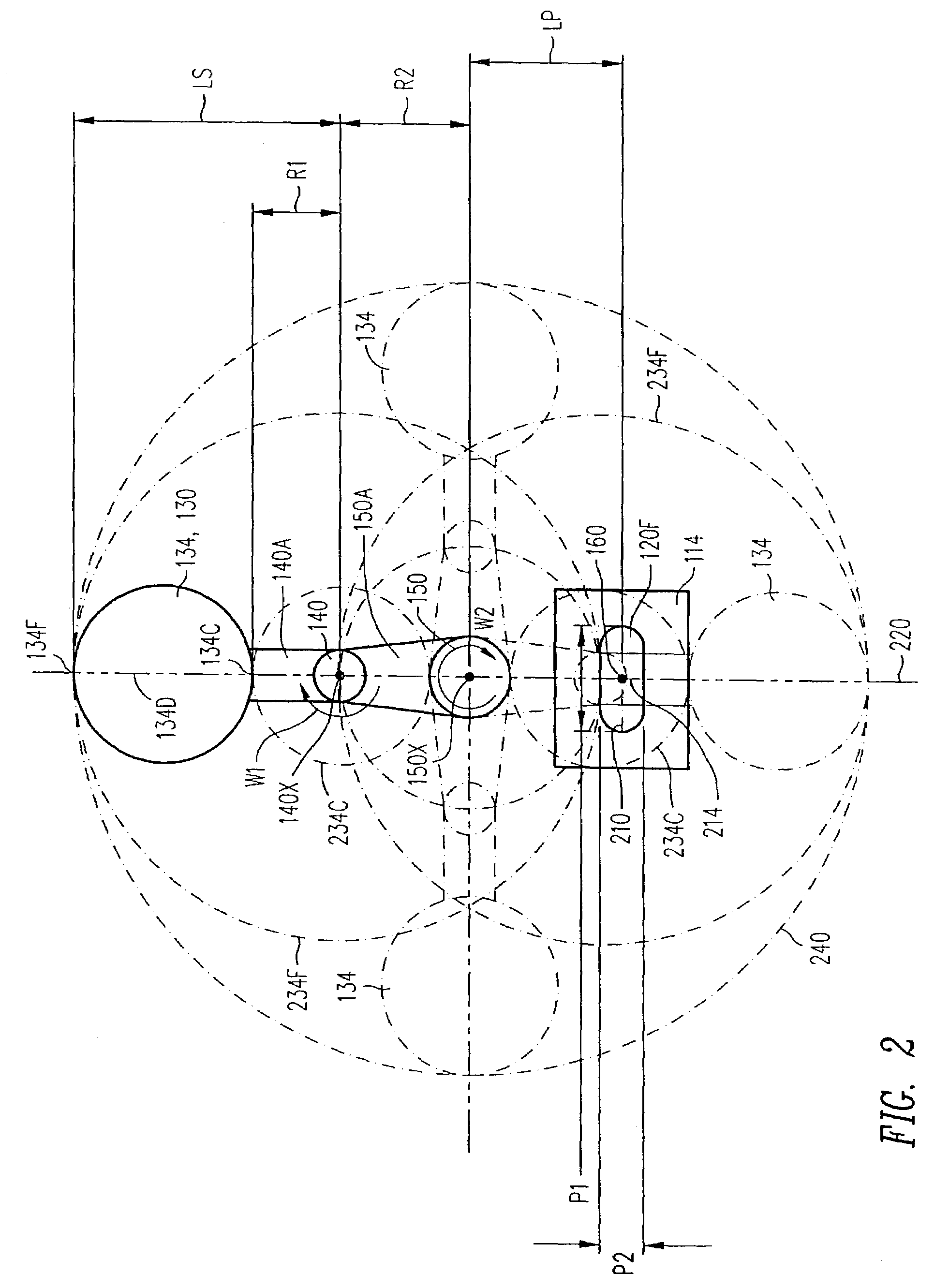Plasma processing methods and apparatus
a processing method and apparatus technology, applied in the field of materials processing, can solve the problems of non-uniform processing, difficult to achieve precise control of angular velocity, and stress that may damage the substrate, so as to facilitate the uniform processing of target surfaces, facilitate precise control of the movement of articles, and reduce acceleration of articles
- Summary
- Abstract
- Description
- Claims
- Application Information
AI Technical Summary
Benefits of technology
Problems solved by technology
Method used
Image
Examples
Embodiment Construction
[0025]In plasma processing system 110 (FIG. 1) plasma source 114 generates plasma jet 120 schematically shown by an arrow. Plasma jet 120 flows vertically upwards through an elongated opening 114-O in source 114. The opening 114-O is elliptical in some embodiments. Horizontal cross sections of plasma jet 120 are also elliptical. In some embodiments, the opening 114-O and the plasma horizontal cross sections have a shape of an elongated rectangle, perhaps with rounded corners.
[0026]Carrrousel 124 includes five holders 130. Each holder 130 holds an article 134 (FIG. 2) whose bottom surface is processed by plasma jet 120. Articles 134 in FIGS. 1–5 are round semiconductor wafers whose flat horizontal bottom surfaces are processed with plasma 120. In some embodiments, the articles are not round and / or are not semiconductor articles. In some semiconductor-wafer embodiments, holders 130 are non-contact wafer holders such as described, for example, in PCT publication WO 96 / 21943 “Device For...
PUM
| Property | Measurement | Unit |
|---|---|---|
| Time | aaaaa | aaaaa |
| Pressure | aaaaa | aaaaa |
| Distance | aaaaa | aaaaa |
Abstract
Description
Claims
Application Information
 Login to View More
Login to View More - R&D
- Intellectual Property
- Life Sciences
- Materials
- Tech Scout
- Unparalleled Data Quality
- Higher Quality Content
- 60% Fewer Hallucinations
Browse by: Latest US Patents, China's latest patents, Technical Efficacy Thesaurus, Application Domain, Technology Topic, Popular Technical Reports.
© 2025 PatSnap. All rights reserved.Legal|Privacy policy|Modern Slavery Act Transparency Statement|Sitemap|About US| Contact US: help@patsnap.com



